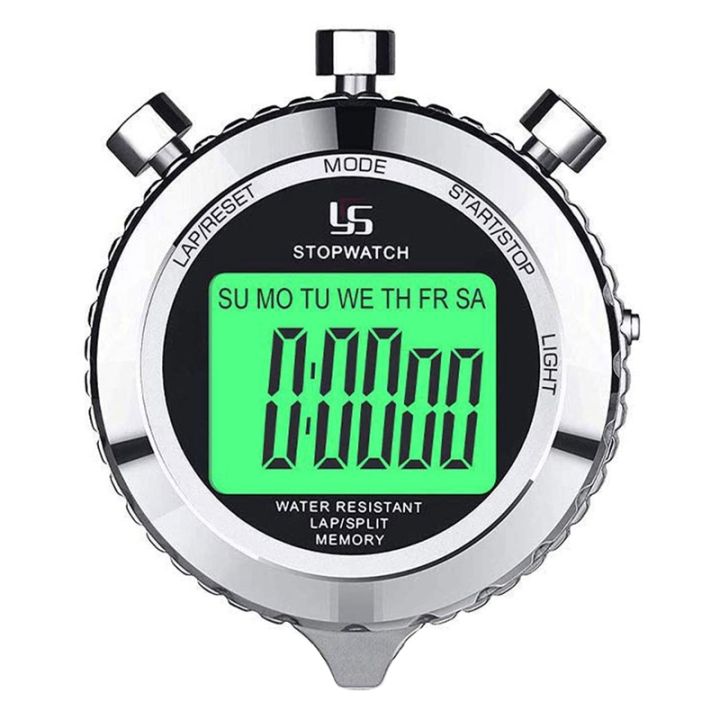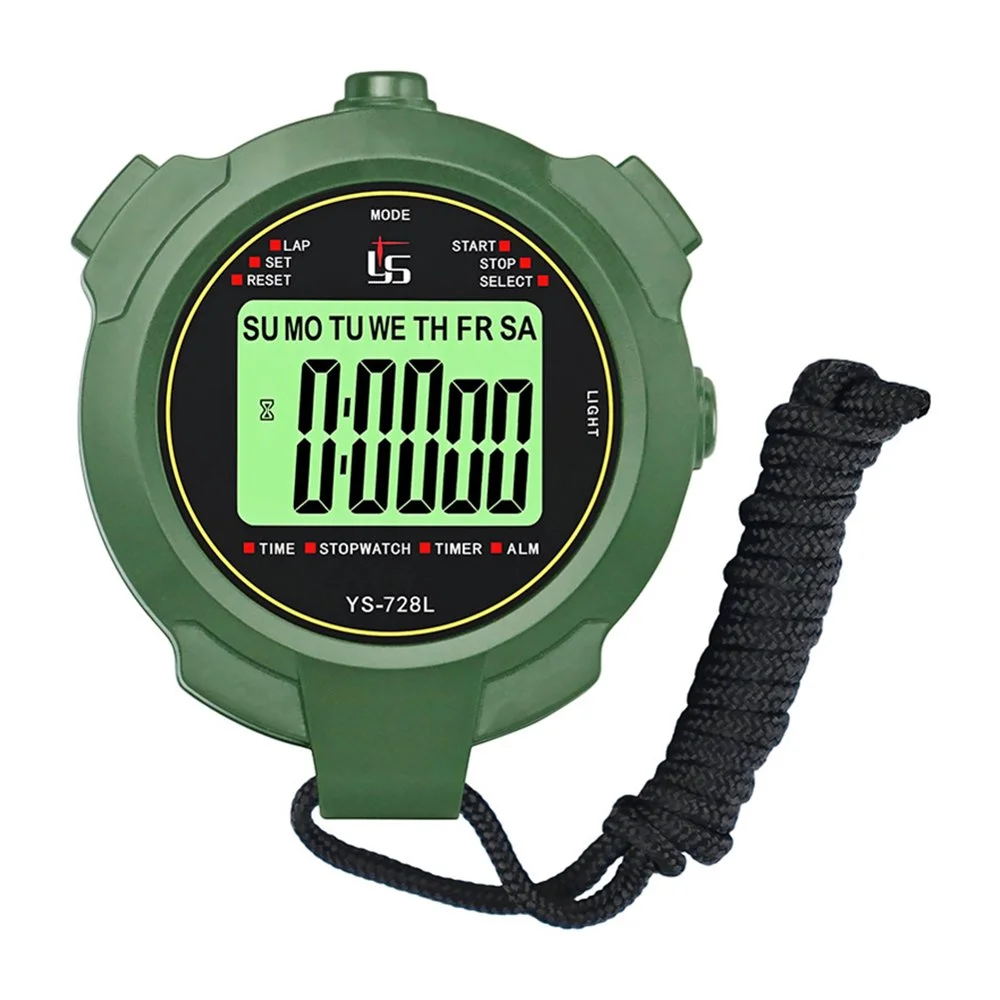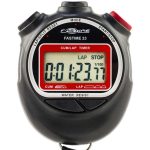Introduction to Stopwatches
How does a stop watch work? Stopwatches are precision tools used for measuring time. They differ from ordinary clocks due to their ability to start, stop, and reset to zero. Whether you’re a coach timing an athlete, a cook tracking cooking times, or a scientist conducting experiments, stopwatches are essential for recording time intervals accurately.
Stopwatches come in various shapes and sizes, yet their goal is the same: to provide precise time measurements. Coaches, athletes, and referees frequently use them in sports to capture exact times for performance analysis. In the kitchen, they help to prevent over or under-cooking. Researchers rely on them for accurately timing experiments and processes.
Knowing how a stop watch works is important to get the most out of its capabilities. As we explore the intricacies of stopwatches, we’ll uncover the mechanics and electronic wizardry that allow them to function so reliably. From the traditional analog devices to the modern digital wonders, stopwatches utilize intricate systems to fulfill their roles in timekeeping.
In the following sections, we will delve into how these devices achieve such accuracy, the differences between analog and digital models, and how to care for them properly. Understanding their mechanism and features will help you select and maintain the right stopwatch for your needs.
The Mechanism Behind Stopwatches
To grasp how stopwatches maintain such precision, delve into their inner workings. The core mechanism of a stopwatch revolves around starting, stopping, and zeroing the elapsed time. First, when you activate the stopwatch, the timekeeping function begins. A press of the button starts the hands or digits. A second press halts them, freezing the moment in time. A final press resets the display to zero.
Under the surface, it’s a dance of gears or circuits. In analog stopwatches, this involves a balance wheel, escapement, and a gear train. The balance wheel oscillates, the escapement controls the movement, and the gears count the seconds, minutes, and hours. Together, they account for each tick with uniformity.
Digital stopwatches, in contrast, use electronic timing. They rely on a quartz crystal oscillator. This quartz vibrates consistently when charged with electricity. Each vibration translates into a precise second through an electronic counter.
In both types, the accuracy hinges on consistent movement. With analog, it’s the steady oscillation of the balance wheel. With digital, it’s the quartz crystal’s stable vibration. These ensure that every interval measured is as accurate as the last. Modern advancements have only sharpened this precision, making stopwatches reliable for various tasks.
Whether it’s for sports, cooking, or research, understanding the mechanism aids in selecting the right stopwatch. Knowing how does a stop watch work inside can also inform how to use it effectively and maintain its accuracy over time.
Analog Versus Digital Stopwatches
When understanding “how does a stop watch work,” it’s crucial to distinguish between analog and digital types. Analog stopwatches feature moving hands on a dial. They operate on a mechanical basis. Springs and gears work together to measure time. They require manual winding to maintain their precision.
In contrast, digital stopwatches display time with numbers on a screen. They use batteries and electronic circuits for operation. A quartz crystal inside keeps time with electronic pulses. This ensures a high level of accuracy. Digital models often include additional functions like alarms and timers.
One main advantage of analog stopwatches is their durability. Without reliance on electronics, they can be more robust in rough conditions. However, they might not be as precise as digital options over time.
Digital stopwatches offer superior precision and ease of use. Their features cater to a wider range of activities, like sports and laboratory work. The ability to record several events at once is often an asset. Yet, they can be sensitive to environmental factors, like extreme temperatures.
In summary, the choice between analog and digital relies on your specific needs. Consider the context of use, desired features, and durability when making your decision.
The Role of the Oscillator in Timekeeping
The heart of a stopwatch’s precision lies in its oscillator. This component is critical for timekeeping. In a digital stopwatch, the oscillator is a quartz crystal. It vibrates at a constant frequency when charged with electricity. These vibrations occur at a set rate, exact and unchanging. This is what keeps time consistent.
Quartz oscillator works due to the piezoelectric effect. When an electric charge goes through the quartz, it vibrates. Each vibration is a tick. The electronics in the stopwatch count each tick. They then translate it into seconds, minutes, and hours we can read.
In the analog counterpart, a mechanical oscillator works similarly. It maintains the passage of time through steady motion. A balance wheel and escapement interact within. They keep the watch hands moving at a fixed pace.
In both types, the oscillator must remain stable. Any change in vibration can upset the timing. This could mean errors in time measurement. Digital stopwatches mostly stay accurate because the quartz frequency rarely shifts. Analog ones can vary with factors such as wear or temperature changes.
How does a stop watch work with such precision? It comes down to the oscillator. A stable oscillator means accurate timekeeping. This is the key to why stopwatches are trusted in timing critical situations. It ensures each second counted is as true as the one before it.
Functions and Features of Modern Stopwatches
Modern stopwatches come with a range of functions and features. They cater to various needs, from simple time tracking to advanced sports training. Many modern devices offer both basic and advanced features. Here’s an overview of what you can expect:
- Lap Timing: They capture individual lap times, crucial for sports like swimming and racing.
- Memory Function: This allows you to store and recall past times for analysis.
- Water Resistance: Suitable for all-weather use, especially in outdoor sports.
- Backlight Display: Helps you see the time in low-light conditions.
- Countdown Timer: Useful for setting time targets or intervals in training sessions.
- Alarm Functions: Reminders or alerts can be set, for instance, in cooking or meeting schedules.
- Connectivity: Some may connect to computers or smartphones for data transfer.
Digital stopwatches have touch screens and intuitive interfaces. They make operation simple. Their design is sleek and often comes in durable materials. Power-saving modes are also common, extending battery life.
While analog stopwatches lack many of these modern features, they remain reliable. They suit environments where electronics might fail. It’s important to consider what functions you need when choosing a stopwatch. Consider your activities and if advanced features will help.
In summary, modern stopwatches boast features that make them versatile. They help in sports, research, and everyday life. Knowing how does a stop watch work in terms of its functions ensures smart use. It also aids in getting the most from the device’s capabilities.
Accuracy Factors in Stopwatches
Evaluating what makes a stopwatch accurate is essential. The key factors that impact the precision of a stopwatch include the quality of its internal components, the stability of its power source, and its resistance to external conditions.
Quality of Internal Components
The gears or circuits inside a stopwatch must work flawlessly. High-quality materials and construction ensure that each tick is consistent. For analog stopwatches, well-crafted gears and a stable escapement are vital. For digital stopwatches, precise electronic timing is crucial.
Stability of Power Source
A reliable power source keeps a stopwatch accurate. For analog stopwatches, a regularly wound spring is necessary. Digital stopwatches need batteries that provide a constant voltage to maintain the quartz oscillator’s frequency.
Resistance to External Conditions
Stopwatches must withstand environmental stresses. Temperature changes can affect a stopwatch’s accuracy. Robust materials and design can protect against shocks, moisture, and temperature variations.
Regular Calibration and Maintenance
Regular checks and maintenance help maintain accuracy. This may include cleaning, battery replacement, or professional calibration. Calibration ensures that the stopwatch measures time intervals accurately.
By considering these factors, you can ensure the stopwatch you use or select will perform reliably. An accurate stopwatch is invaluable in fields that depend on precise time measurements.
Common Uses of Stopwatches in Various Fields
Stopwatches serve many roles across different sectors. Here are a few fields where their precise timing is indispensable:
- Sports: Coaches time athletes during training and competitions to track and improve performance.
- Cooking: Chefs use stopwatches to time recipes precisely, ensuring perfect cooking results every time.
- Education: Teachers employ stopwatches for timed exams or to manage classroom activities efficiently.
- Research: Scientists rely on stopwatches to time experiments where accuracy is essential for valid results.
- Healthcare: Medical professionals use stopwatches during patient assessments or to track response times in emergencies.
- Manufacturing: In assembly lines, stopwatches help maintain pace and productivity, ensuring consistent output.
- Fitness: Personal trainers track exercise intervals to customize workouts for optimal benefits.
Understanding how does a stop watch work aids in these fields. It helps professionals measure time with precision for effective and reliable outcomes. For the optimal use of a stopwatch, it’s necessary to match its features to the task at hand.
Caring for Your Stopwatch to Ensure Accuracy
Maintaining a stopwatch’s accuracy involves regular care and attention. Here are some guidelines to help you care for your stopwatch:
Handle with Care
Treat your stopwatch gently. Avoid dropping it or exposing it to extreme forces. Handling it with care prevents damage to its internal components.
Keep It Clean
Dust and dirt can interfere with the mechanics of an analog stopwatch or the electronics of a digital one. Clean the exterior with a soft cloth, and consider a professional cleaning for the inside if necessary.
Store Properly
When not in use, store your stopwatch in a dry place. Keep it away from direct sunlight and high temperatures to protect its materials and internal mechanisms.
Check the Battery
For digital stopwatches, monitor battery life. Replace the battery as soon as you notice any decline in performance to keep the quartz oscillator running smoothly.
Regular Calibration
Have your stopwatch calibrated by a professional regularly. This ensures it measures time as accurately as possible. It’s especially important for analog stopwatches that can lose precision over time.
By following these care tips, you can extend the life of your stopwatch and ensure it provides precise time measurements whenever you need it. Remember, how does a stop watch work is as much about its design as how you maintain it.




